Looking for a taste of the wild for your holiday celebrations? Nuts are found in many forested areas around North America, and many offer a surprising and tasty treat.
In September, while hiking on the Tongue Mountain Range on the western side of Lake George in New York’s Adirondack Park, I found the most curious looking tree. The bark hung in long strips from its base to deciduous top.
As in a fairytale, I half expected a bearded, old tree-man to blink his eyes at me from under unkept woody eyebrows, but no magical awakening occurred. The grove was intriguing just the same. The shaggy hardwoods I had discovered are appropriately named, shagbark hickory (Carya ovata). Native to the Eastern U.S. and southern Canada, they can grow over 100 feet tall and live 350 years.
The grove on the Tongue Mountain Range was half that height, but it had been there a while. Only mature shagbark hickory trees have shaggy bark, and these were laden with unripe nuts.
Shagbark hickory nuts are edible and sweet tasting. In recipes, they can be used as a substitute for pecans, with which they can hybridize. The early Algonquins, who inhabited the Lake George region prior to European settlement, harvested them in great quantities to eat as nuts and to make into a milky drink, called pawcohiccora, from which the English word, hickory, is derived.
Shagbark hickory nuts are also an important food source for a variety of animals including squirrels, raccoons, field mice, bears, fox and some birds, such as mallard and wood ducks, bobwhite quail and wild turkey.
Wild nuts are a forager’s delight: easy to identify and usually easy to find. They’re packed with nutrients and heart-healthy fats and oils. Even though individual trees don’t produce annually, there’s always nuts in the forest each fall.
There are a variety of edible nut species out there for you to enjoy. Here are some you might find on your next woods walk.
Top 10 List
-
Pecans
Carya illinoinensis
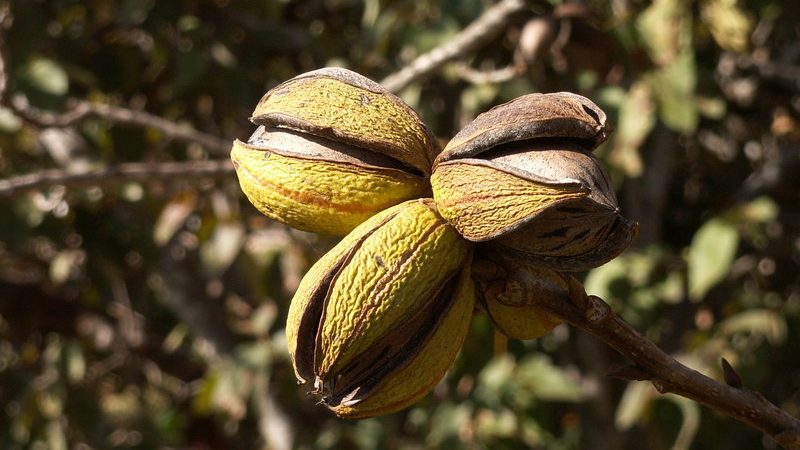
Photo © Dobbi / Wikimedia Commons Wild pecans (Carya illinoinensis) live in the lowlands of the deep south, but, as their Latin name implies, you can also find them in river bottoms as far north as Illinois. Native Americans ate and traded this sweet nut long before the earliest Spanish explorers first sampled them in what is now Louisiana, Texas and Mexico. Later this native nut found its way into Thomas Jefferson’s orchard at Monticello, his home in Virginia. Jefferson then gave pecan trees to George Washington for his Mount Vernon estate.
Wild pecans taste the same as cultivated ones but are smaller and easier to remove from the shell. They grow best where summers are long, hot and humid. And they’re durable. You can usually still eat them even after they have spent a winter on the ground.
-
Hazelnuts
Corylus americana
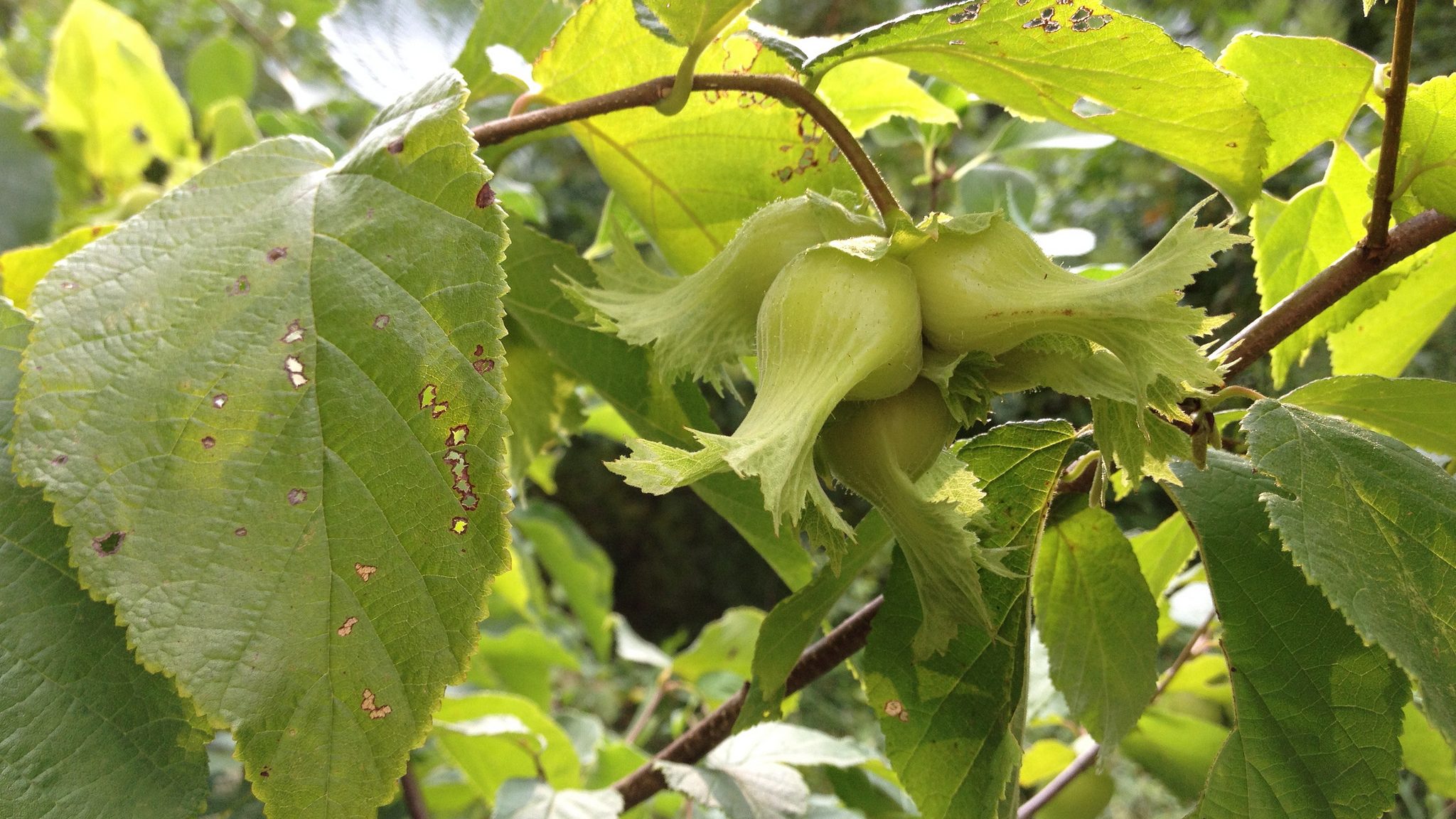
Photo © Fritz Flohr Reynolds / Flickr Also called American filberts (Corylus americana), wild, native hazelnuts taste like the cultivated kind, but are half the size. Though you can eat them raw, they are especially yummy when roasted or ground into a pastry paste. Don’t forget to remove the thin, brown skin for the sweetest praline flavor.
Depending on where you live, hazelnuts ripen between July and October. Don’t wait around to collect them! These succulent nuts are eagerly eaten by squirrels, deer, turkey, woodpeckers, pheasants and other mast-seeking species. If you love wild hazelnuts, consider growing them if you have native landscaping on your property, especially if you want to attract wildlife to your yard.
-
Black Walnuts
Juglans nigraare
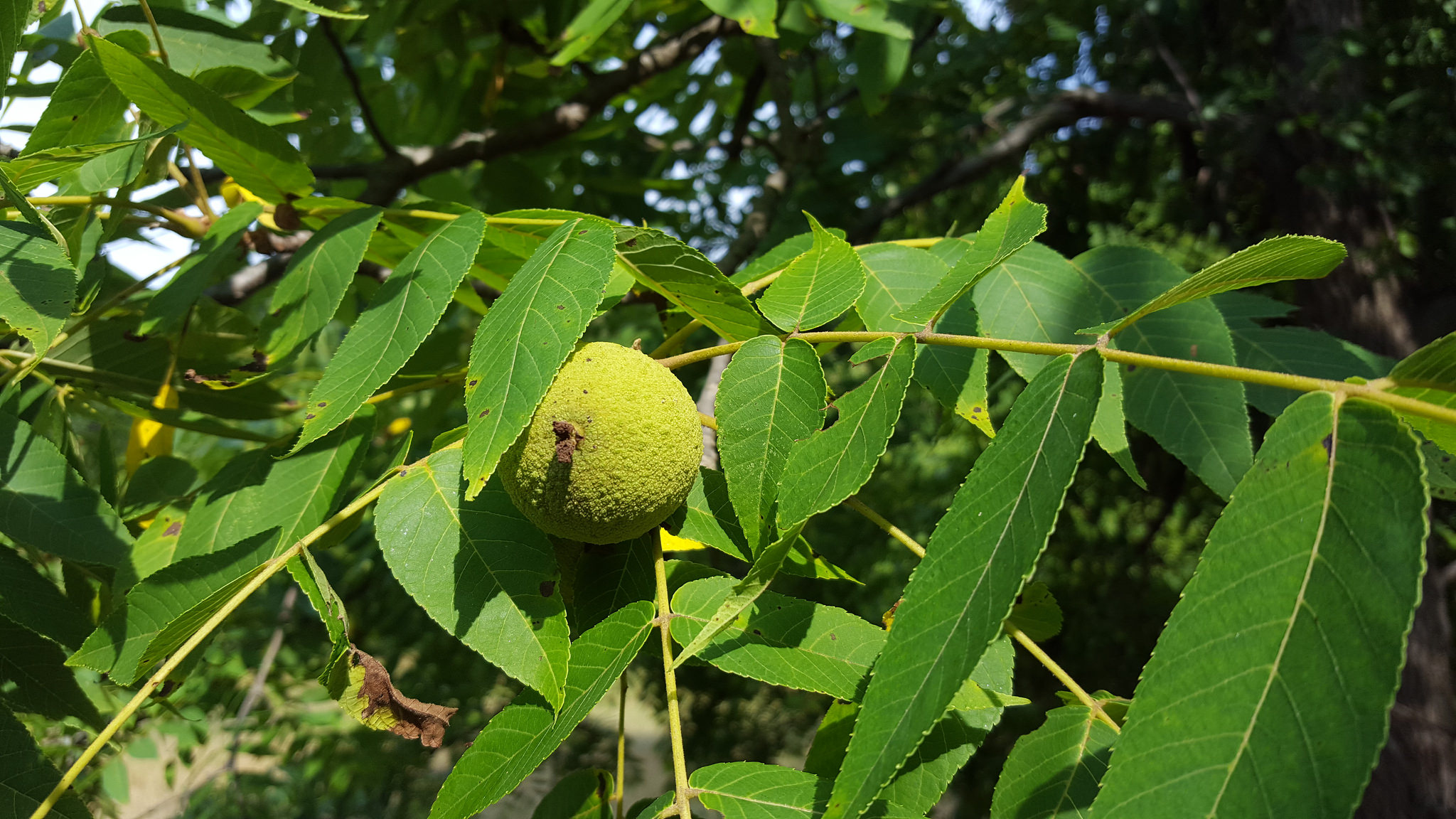
Photo © Matthew Beziat / Flickr Forest foragers can find two types of wild walnuts, black and white. The eastern black walnut (Juglans nigraare) is an upland hardwood, though it also loves riparian areas. Don’t worry about the bitter smell when you gather them. The nut meat is odor-free.
Unlike mild English walnuts in grocery stores, wild black walnuts have a strong, spicy taste. I find them delightful for baking, probably because the sugar and chocolate in my brownie recipe balances this walnut’s intense flavor.
Black walnuts have a become a conservation concern due to Geosmithia morbida, a fungus more commonly known as “thousand cankers disease”. The walnut twig beetle spreads the fungus into the tree’s wood, causing numerous abnormal growths (the cankers), which in turn, restrict nutrient flow, eventually killing the tree.
-
White Walnuts
Juglans cinerea
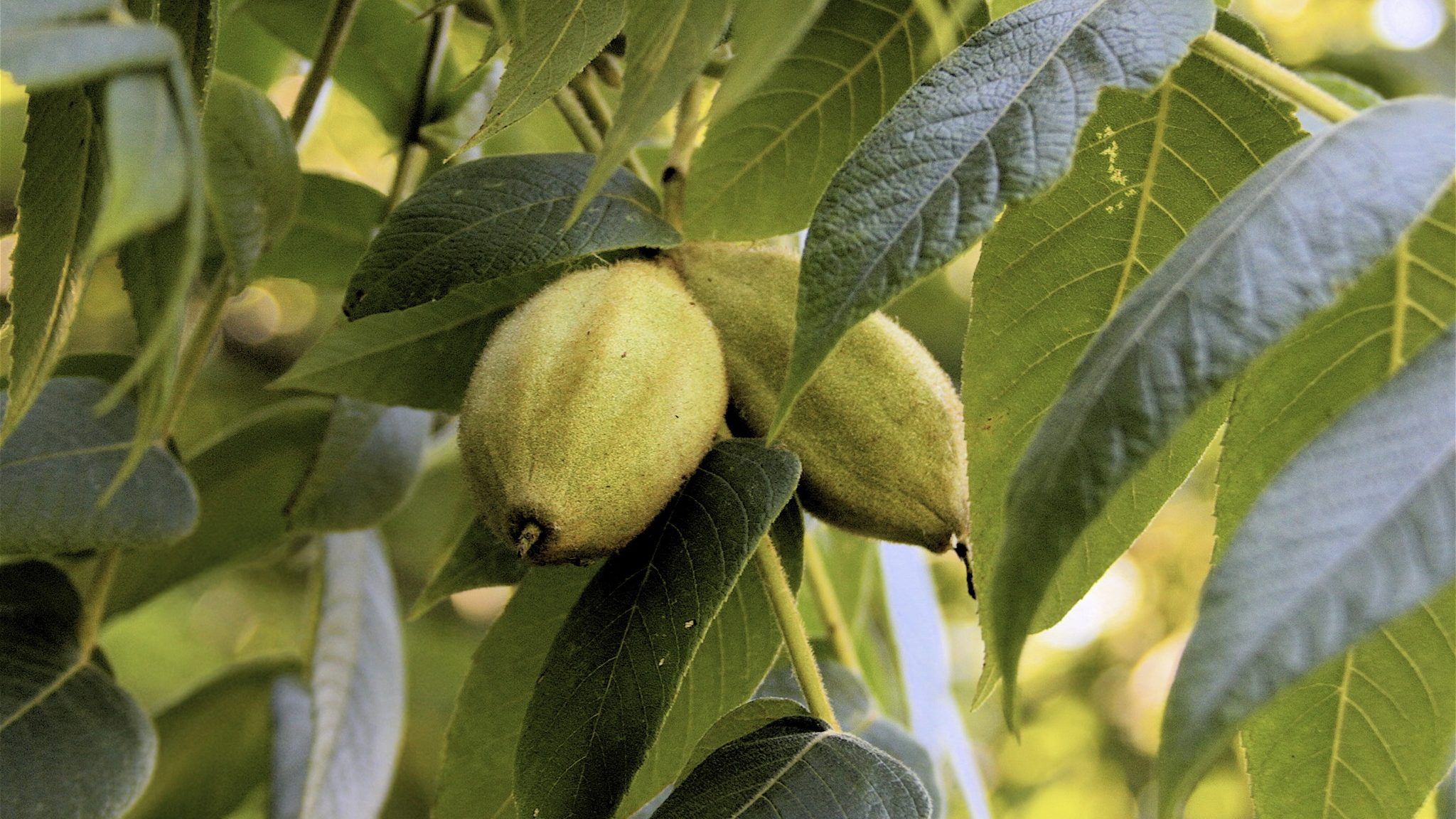
Photo © Dan Mullen / Flickr White walnuts (Juglans cinerea), or butternuts, have a similar range and leaf-shape to their black cousins, but its nut is distinctive. Black walnuts are round versus white walnuts which are oblong.
Butternuts have a high oil content, which is nutritious but also causes them to spoil quickly. If you find them in the woods, shell them immediately and then freeze them.
Treasure this buttery-tasting nut, if you find them. Unfortunately, butternuts are also fighting a canker-causing infection that was first discovered in 1967, in Iowa, and has since reduced their number in the U.S. by almost 80 percent.
-
Chestnuts
Castanea dentata
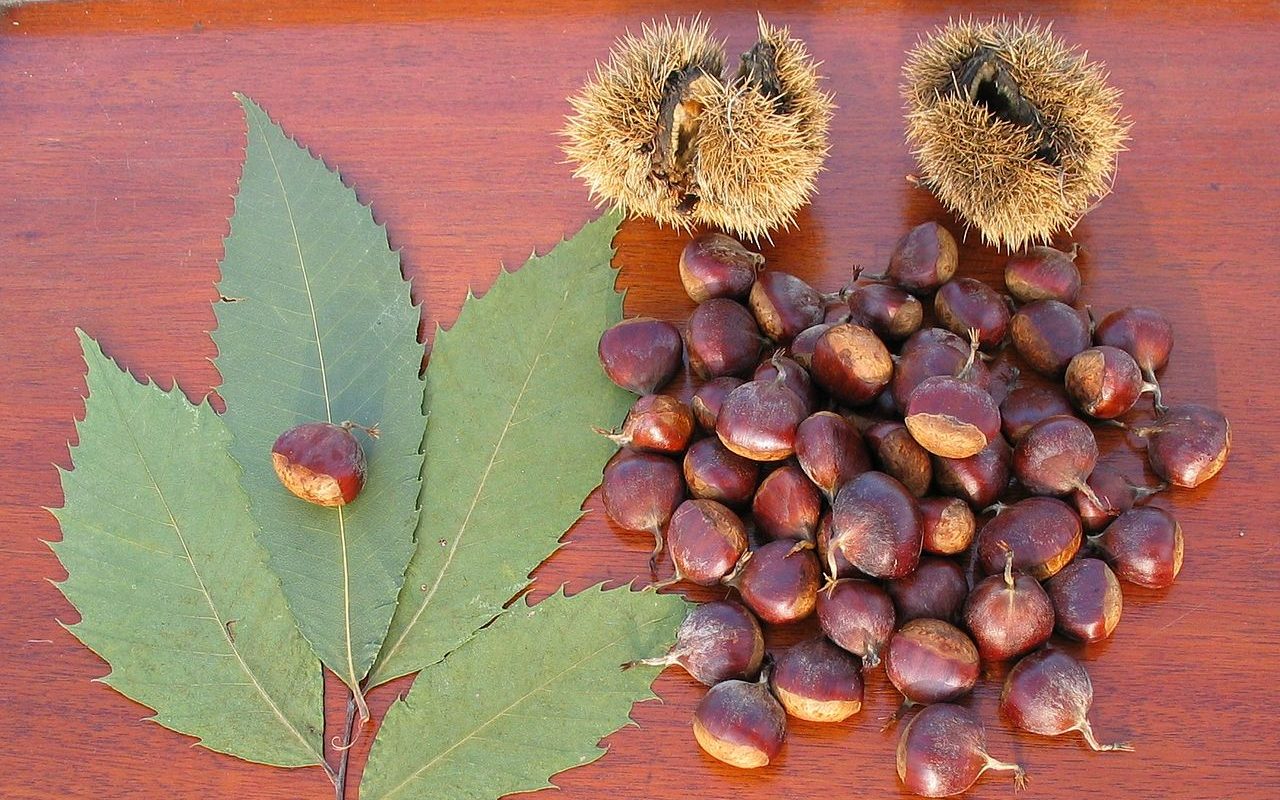
Photo © Peatcher / Wikimedia Commons Once the dominant hardwood in the eastern U.S., American chestnut (Castanea dentata), succumbed to yet another fungal disease, in this case, causing root rot. By the 1950’s, most mature American chestnuts were gone, though saplings still sprout from old tree remains.
The American Chestnut Foundation is leading the scientific charge to find and propagate blight-resistant chestnut trees, with the goal of once again seeing this iconic tree throughout the wild forests east of the Mississippi.
Until then, if you come across a chestnut, it’s probably a Chinese chestnut (Castanea mollissima), an introduced species. They taste good, especially roasted, and they’re plentiful, usually producing an annual crop of nuts.
-
Acorns
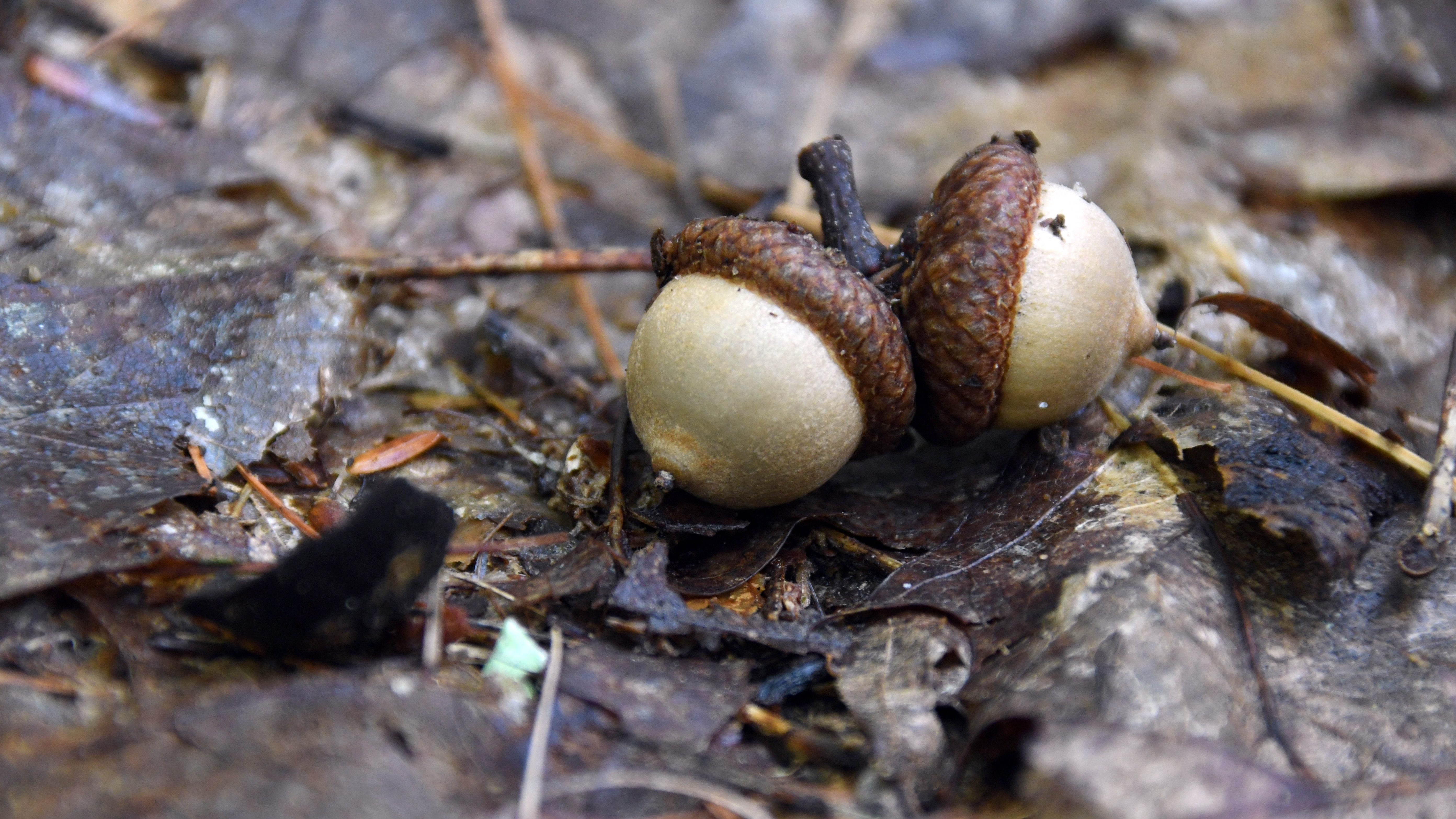
Photo © Lisa Ballard What about the plentiful acorns that lie scattered under oak trees in the fall? Eaten raw, they won’t kill you, but they taste terribly bitter due to a high level of tannins. If you boil them for 15 minutes, the tannins leach into the water which turns brown. Change the water, then boil them another 15 minutes. Keep repeating the process until the water doesn’t change color, then use the acorns in soups, stews and other recipes that use nuts.
If this process sounds too cumbersome, it might be easier to look for beechnuts instead, as oaks are members of the beech family.
-
Pine Nuts
Multiple species
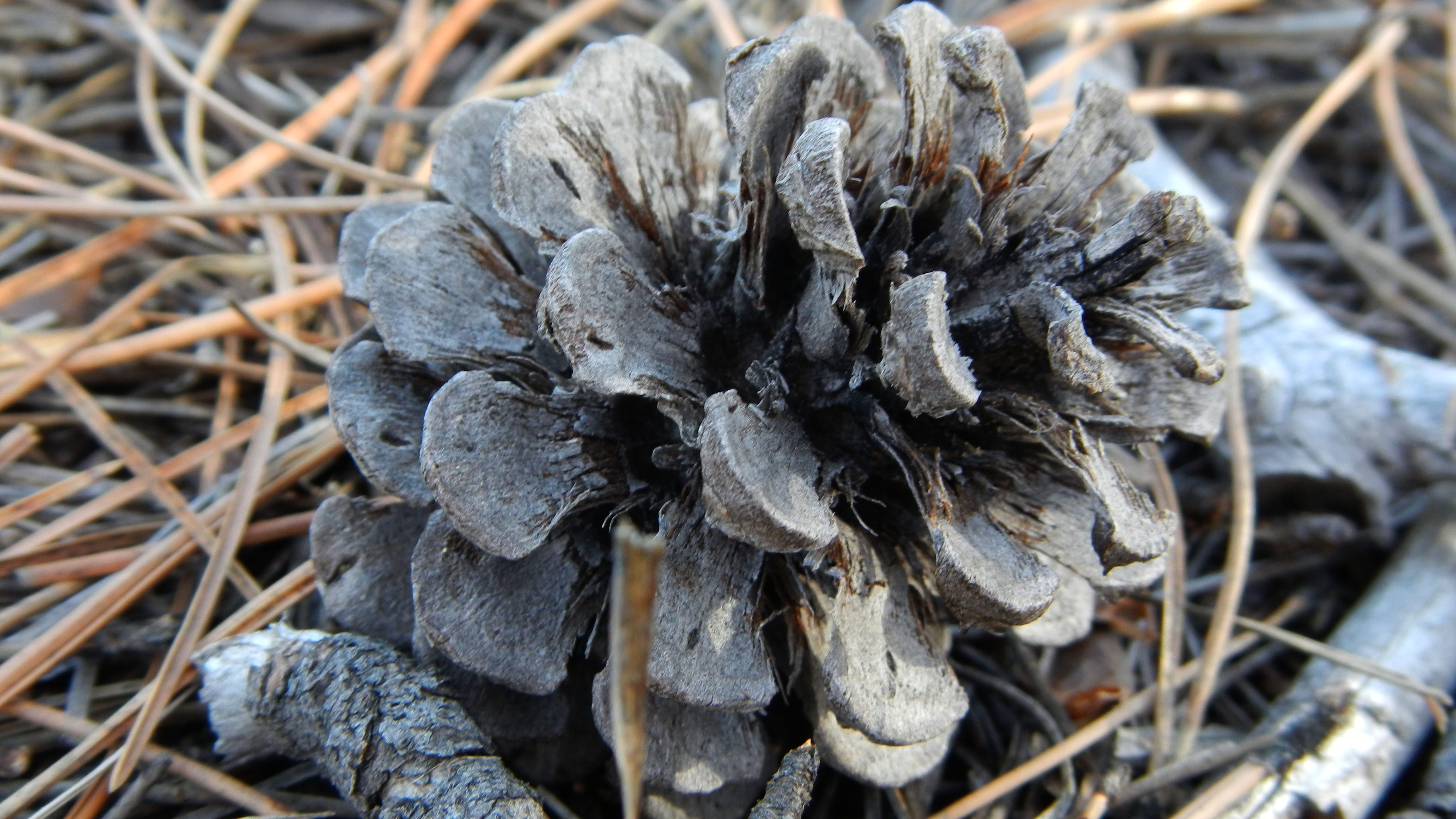
Photo © Lisa Ballard All pine trees produce nuts inside their cones, but only a few are edible for humans. Ponderosa pine and pinon pine, both western species, are the most well-known. When the cones of these trees open, you can collect the nuts, which then need to be shelled.
Eating pine nuts reminds me of sunflower seeds. They are about the same size and taste good with a little salt on them or as a garnish on salads. I also use pine nuts to make homemade pesto:
Wild Pesto
- 2 Generous handfuls of fresh basil leaves
- 1 t. Minced garlic
- ¼ c. Pine nuts
- ½ c. Olive oil
- 1/3 c. Freshly grated parmesan cheese
Place all ingredients in a food processor. Puree, then toss with your favorite cooked pasta noodles. Freeze the leftover pesto for later use.
-
Beechnuts
Fagus grandifolia
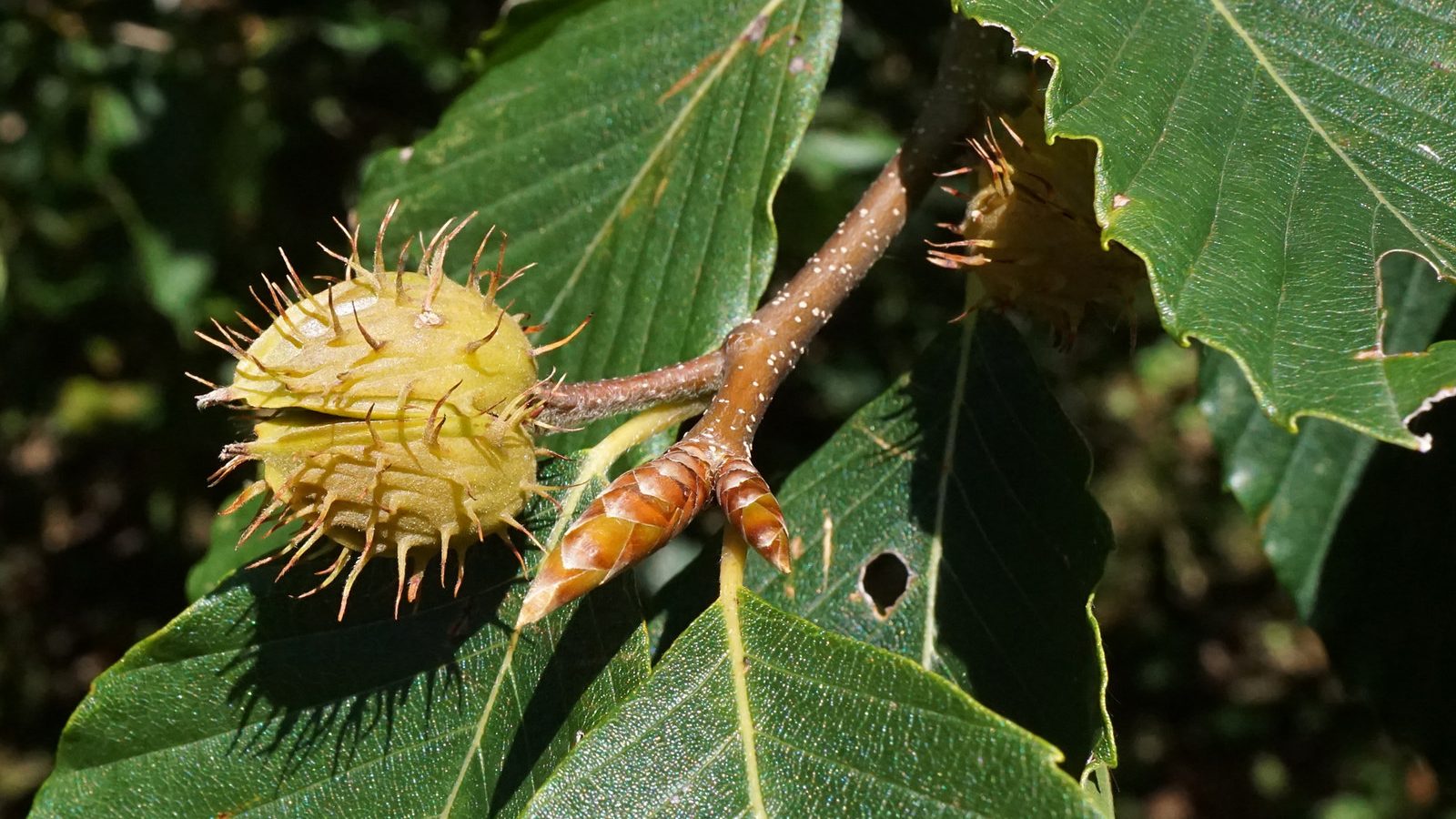
Photo © Plant Image Library / Flickr Beech trees produce nuts in three-year cycles. Beechnuts are small, but delicious, even raw, if you harvest the right kind of beechnut. The nut must come from native American beech trees (Fagus grandifolia), not European beech trees (Fagus sylvatica) which are also called “common beech.”
American beechnuts are sweet. European beechnuts are bitter like acorns. Check the leaves and the bark to tell them apart. American beech have slightly wrinkled, pale gray trunks which are sometimes compared to the texture of an elephant’s skin, and they have large leaves, up to five-inches long. The trunks of a European beech are also gray, but darker, and its leaves are shorter, two to four inches long.
Beechnuts spoil quickly, so either eat them or roast them shortly after harvesting them. Or press them to extract the oil, which is on par with gourmet olive oil.
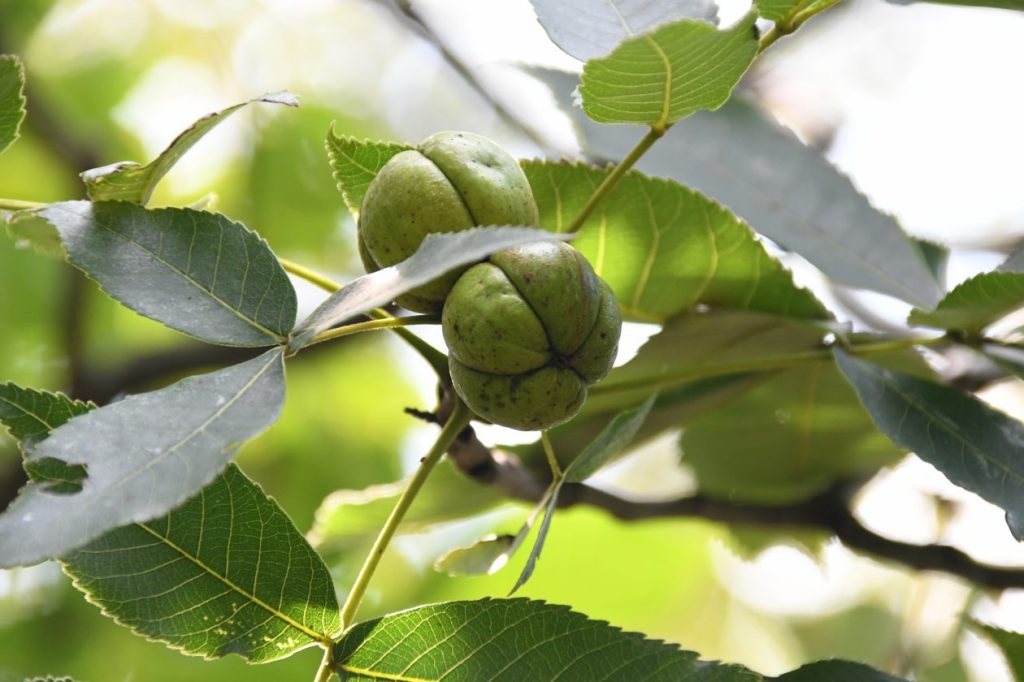



I am looking for wild seeds and nuts to grow, since the commonly sold “organic/heirloom” varieties could still have been manipulated (hybridized) by humans at some point through modern agriculture. Foraging as a novice might be dangerous, and in most cases impractical in my case. Any insight on this is fine.